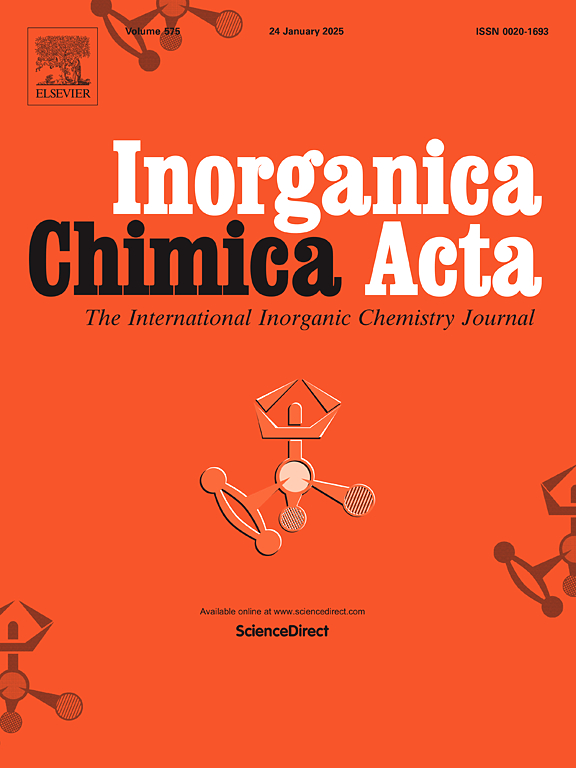Trans-Pd(II) complexes: A different approach for the development of promising anticancer drugs
IF 2.7
3区 化学
Q2 CHEMISTRY, INORGANIC & NUCLEAR
引用次数: 0
Abstract
Pd(II) complexes, thanks to the similarity of their coordination chemistry to that of Pt(II) compounds and their improved solubility in water than the latter, offer a promising way for the design of novel anticancer agents. Considering that trans-Pd(II) complexes are more cytotoxic than their cis-counterparts and endowing them with ligands that could grant them improved stabilization during their circulation inside the body, a panel of trans-Pd(II) complexes with general formula trans-PdL2X2 (where L = pyridine or piperidine, X = Cl, Br, I) was synthesized. The interactions of these complexes with model proteins were studied with UV–vis and NMR spectroscopy, and their in vitro activity against selected cancer cell lines was also investigated. The study demonstrates that square-planar trans-Pd(II) complexes have potential as chemical tools in medicinal chemistry. They are able to interact with proteomic targets, and despite their limited cytotoxic activity towards the selected tumor cell lines, the interaction profiles and solution reactivity provide valuable mechanistic insights on the mode of action of this class of compounds. Indeed, a reproducible and accessible methodology was defined to investigate the square-planar trans-Pd(II) complexes.

反式pd (II)复合物:开发有前景的抗癌药物的不同途径
Pd(II)配合物由于其配位化学性质与Pt(II)化合物相似,并且其在水中的溶解度比Pt(II)化合物更好,为新型抗癌药物的设计提供了一条有希望的途径。考虑到反式pd (II)配合物比顺式pd (II)配合物更具有细胞毒性,并赋予它们配体,使它们在体内循环过程中具有更好的稳定性,合成了一组具有通式trans-PdL2X2(其中L =吡啶或哌啶,X = Cl, Br, I)的反式pd (II)配合物。利用紫外可见光谱和核磁共振光谱研究了这些复合物与模型蛋白的相互作用,并研究了它们对选定癌细胞的体外活性。该研究表明,方形平面反式pd (II)配合物具有作为药物化学化学工具的潜力。它们能够与蛋白质组靶点相互作用,尽管它们对选定的肿瘤细胞系的细胞毒活性有限,但相互作用谱和溶液反应性为这类化合物的作用模式提供了有价值的机制见解。实际上,我们定义了一种可重复且易于使用的方法来研究方形平面反式pd (II)配合物。
本文章由计算机程序翻译,如有差异,请以英文原文为准。
求助全文
约1分钟内获得全文
求助全文
来源期刊

Inorganica Chimica Acta
化学-无机化学与核化学
CiteScore
6.00
自引率
3.60%
发文量
440
审稿时长
35 days
期刊介绍:
Inorganica Chimica Acta is an established international forum for all aspects of advanced Inorganic Chemistry. Original papers of high scientific level and interest are published in the form of Articles and Reviews.
Topics covered include:
• chemistry of the main group elements and the d- and f-block metals, including the synthesis, characterization and reactivity of coordination, organometallic, biomimetic, supramolecular coordination compounds, including associated computational studies;
• synthesis, physico-chemical properties, applications of molecule-based nano-scaled clusters and nanomaterials designed using the principles of coordination chemistry, as well as coordination polymers (CPs), metal-organic frameworks (MOFs), metal-organic polyhedra (MPOs);
• reaction mechanisms and physico-chemical investigations computational studies of metalloenzymes and their models;
• applications of inorganic compounds, metallodrugs and molecule-based materials.
Papers composed primarily of structural reports will typically not be considered for publication.
 求助内容:
求助内容: 应助结果提醒方式:
应助结果提醒方式:


